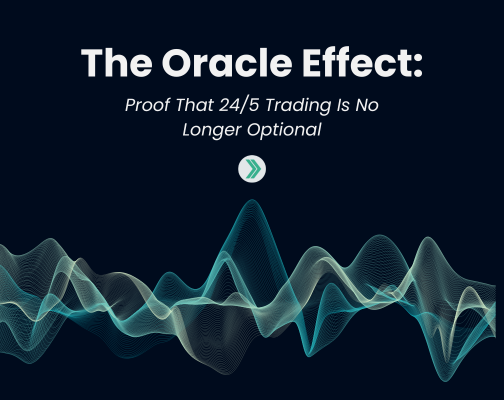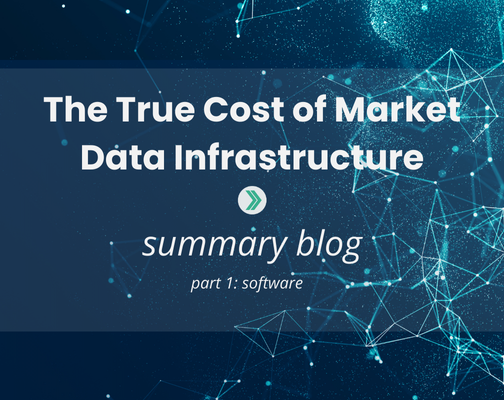Unified Trading Infrastructure: A Smarter Way to Scale
Over the years, trading firms have assembled a patchwork of infrastructure to meet individual desk and business-line needs resulting in duplication at every layer: multiple vendor stacks, inconsistent performance, and escalating costs.
In Part One, we explored how agency brokers can reduce their data center footprint, and in Part Two, how market makers and quant firms use infrastructure as their edge in the ultra-low-latency race.
In this final installment, we turn to multi-desk trading firms and large financial institutions. Their infrastructures have grown complex and siloed over time, making scale, not speed, the greatest challenge.
Over time, many firms have built two or more distinct infrastructures to serve different latency needs, and it’s now difficult to backpedal. Investments made on the ultra-low-latency side rarely benefit systems focused on higher resilience and reliability. Meanwhile, the less latency-sensitive environments often rely on older technology that’s struggling to keep pace with today’s market conditions. Upgrading those systems will take time and effort, but without a shift in strategy, firms risk ending up in the same position down the road. It’s time to move to an architecture that can meet every real-time market data use case while unifying the infrastructure behind them.
What’s Holding Firms Back: Siloed Systems, Misplaced Assumptions
Over time, pragmatic, desk-by-desk solutions have compounded into a web of duplicated pipelines, fragile integrations, and misaligned priorities.
The Legacy Approach
What began as an effort to give desks greater autonomy, control, and flexibility has instead created complexity, overhead, and mounting technical debt. Each desk or pod now runs its own market data pipeline, with business units, from brokerage to market making, often operating entirely separate vendor-built or homegrown solutions.
Beyond organizational sprawl, most firms also lack an efficient market data fan-out. It’s nearly impossible to achieve perfect distribution across applications, so symbols are grouped in multicast streams that send data to systems that don’t need it. Without preprocessing or filtering, every application receives the full load. Adding this to overprovisioning and duplication of servers to handle redundancy and improve reliability further decrease efficiency.
While the original intent was to empower individual teams, this model has instead produced fragmentation and inefficiency. Each new enhancement or performance upgrade benefits only part of the organization, leaving others behind. The result is a diminished return on R&D and innovation compared to what a shared, unified system could deliver.
The inefficiencies are only part of the problem. The financial burden they create is even greater.
When Autonomy Becomes Expensive
For latency-sensitive use cases, market-making desks have traditionally chosen to build in-house. But the costs of doing so are steep and continue to climb with scale. According to Exegy analysis, developing FPGA-based solutions requires highly specialized engineering talent that is difficult to hire and retain, costing upwards of $5 million per year to support a single market with a team of roughly four FPGA engineers. This number is based on 3.5 years of engineering effort and will increase if you have a smaller team. Even with a team of four, it can take years to deliver a production-ready system. Software feed handlers aren’t a cheaper alternative: they cost eight times more to develop and 2.5 times more to maintain than vendor solutions,
Supporting even a handful of markets can require dedicated teams, with firms spending upwards of $500K annually per exchange data channel to keep systems running. As markets grow, so does the maintenance burden — compounding cost and operational risk enterprise-wide.
The Compounding Cost of Fragmentation
Duplicated and inconsistent infrastructure increases the complexity of managing exchange-driven changes (EDCs), monitoring, and configuration, raising the risk of outages as market data volumes grow.
The lack of standardization across desks adds to the cost and complexity of managing disparate systems. Each infrastructure stack has its own APIs, monitoring tools, and integration paths, forcing operational teams to maintain separate processes and configurations for every environment. That duplication increases day-to-day workload, slows incident response, and makes it harder to ensure consistent performance and reliability across the enterprise.
The complexity doesn’t end there. Many firms also maintain different network and connectivity providers for each environment — sometimes even paying for slower vendor feeds in addition to direct feeds. These parallel setups add more infrastructure to monitor and record, more switches to manage, and more points of failure. And if you’re already paying premium dollars for direct feeds from key exchanges, wouldn’t you want that investment to benefit the entire business? Better latency never hurts — and a unified system means a simpler network, less hardware to maintain, and lower operational overhead overall.
These challenges reveal a clear need for a new approach — one that unifies infrastructure without compromising performance or autonomy.
The Breakthrough: Exegy Nexus for Unified Infrastructure
What Is Exegy Nexus?
Exegy Nexus is a managed market data solution designed in close collaboration with market makers, agency brokers, and global banks. Built from their direct input and real-world requirements, Nexus addresses the full spectrum of real-time market data needs regardless of latency profile. It unifies fragmented systems by delivering both ultra-low-latency and enterprise-scale performance within a single platform. A single appliance can power high-speed trading strategies, low-jitter agency workflows, and post-trade analytics side by side — without duplicating infrastructure.
Key Capabilities
- Serve every desk and every latency profile from one platform. Market making, agency brokerage, quant strategies, and analytics all run on the same unified infrastructure, delivering deterministic performance across the full spectrum — from ultra-low-latency trading to high-volume analysis.
- Centralized administration and monitoring. Manage configuration and performance metrics from a single control plane, simplifying operations across multiple desks and data centers.
- Embedded market data entitlement. A centralized entitlement framework provides a complete view of data consumption, reducing complexity and streamlining reporting and compliance while cutting duplicative admin work.
- Configurable hardware options. Choose from the affordable AMD X3 card for market-data workloads or the Bittware XUV-V8 card for order-execution and routing — each delivering predictable performance within the Nexus platform.
- Modular, scalable design. Nexus supports multiple business lines with differing resilience and performance needs, expanding seamlessly as firms grow.
A Future-Proof Technology Partnership
The value of Exegy Nexus extends beyond the appliance itself. It comes from having Exegy as a long-term partner — one committed to continuously challenging the status quo and driving innovation in capital markets technology. With more than two decades of experience managing mission-critical systems in live production environments, Exegy provides the expertise, reliability, and support firms need to scale confidently. The same proven technology foundations that power Exegy’s global feed handling and execution platforms form the backbone of Nexus, ensuring resiliency and performance at every level.
(1) Unify trading infrastructure without losing autonomy. Exegy Nexus hosts customer-developed hardware or software code within a shared system, giving teams flexibility while eliminating fragmented workflows and reducing experimentation overhead.
(2) Built on continuous innovation. Backed by decades of production-proven technology, Exegy continually expands venue coverage and invests in R&D to uphold its “can’t build better” performance standard.
(3) Simplify enterprise operations. Nexus streamlines monitoring, upgrades, and entitlements across desks, supported by Exegy’s managed service team through trading, maintenance, and testing cycles.
(4) Invest in a platform, not a point solution. With a roadmap shaped by our vision and drive to solve our customers’ challenges, Exegy Nexus evolves with your business — scaling seamlessly as markets and strategies grow.
The result: a platform that reduces costs, eliminates complexity, and enables firms to scale smarter across every desk.
Scaling Smarter with Exegy Nexus
By replacing fragmented infrastructure with a unified Exegy Nexus deployment, firms can focus resources on what truly drives performance — differentiated strategies and scalable operations. Market data is already a premium expense; Nexus ensures firms capture the full value of that investment instead of paying twice, or more, to maintain duplicative systems.
Whether it’s onboarding new pods and strategies, standardizing technology stacks across asset classes, or aligning infrastructure with business priorities, Exegy Nexus delivers a single foundation that serves every desk — from low-latency trading to enterprise analytics. By offloading feed handling and centralizing administration, firms reduce total cost of ownership, lower vendor complexity, and free scarce engineering talent to focus on innovation instead of maintenance.
Legacy systems are holding your firm back. Exegy Nexus delivers a smarter path forward — centralized, scalable, and built for the future. For organizations that span multiple desks, regions, and latency profiles, Nexus provides the flexibility to scale without compromise and the performance to power the strategies of tomorrow.
Exegy Nexus launched in Q4 2025 with U.S. Equities support. Orders are now open, with limited availability on a first-come, first-served basis. Be among the first to unify your market data stack with Exegy Nexus.



